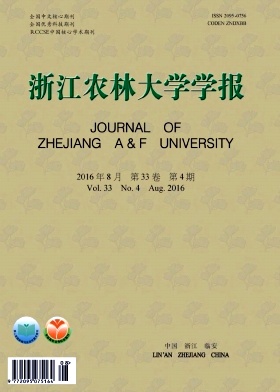-
人类利用植物进行固土护坡已有较长历史。早在1591年,中国就开始用柳树Salix babylonica来进行固土护坡及稳定堤防[1]。在17世纪,中国就用植被保护黄河河岸。中世纪,法国、瑞士通过栽培柳树来防护运河河岸。1633年,日本采用植草皮、栽树苗的方法治理荒坡,这也是日本植被护坡的起源。欧洲最早使用植物固坡是在19世纪。20世纪30年代,植被护坡被引入中欧,从此植被护坡技术在欧洲广为传播,主要应用于公路边坡和河堤防护。在北美,植被护坡可以追溯到1926年[2]。英国于20世纪40年代末开始使用植被护坡技术,主要应用于陆地景观的稳定、堤岸和交通线路边坡的保护等。位于东南亚的马来西亚、泰国等国家,香根草Vetiveria zizanioides因具有根系发达、扎根深、根系抗拉强度比一般植物大等特点,被广泛用于沟渠的加固和高速公路路基护坡[3]。根系是植物重要器官,不仅具有吸收输导土壤中的水分养分,合成和储存营养物质等生理功能,还具有固持水土的能力。研究表明,植物根系通过发挥其自身的抗拉特性以增强土体的抗剪强度[4]。同时,植物根系具有的抗拉性能是增强边坡稳定性最重要的因素,也是根系固土抗蚀的重要指标,能表征根系材料在固土过程中的受力潜能[5]。因此,本文综述与植物根系抗拉力学性能相关的研究。
HTML
-
不同植物根系的形态和力学性能差异很大,目前学术界还没有关于根系抗拉试验的规范和标准,国内外研究根系抗拉性能采用的方法和设备各不相同。目前主要通过室内单根抗拉试验、室外原位土壤水平拉拔试验和垂直拉拔试验来探究不同植物根系的抗拉强度及其影响因素。
-
对于植物根系抗拉试验中根系的采集和保存,国内外学者往往根据实际条件而采取不同的方法。采集试验备用根系主要有2种主要方法:完全挖掘法和剖面壁法。采用完全挖掘法采集根系时,应尽量防止对根系的机械损伤,采集主直根系时先从基部将根系切断,然后将根系慢慢拉出,采集须根时把根系从基部切断后将根系水平整体托出,保证根系的完整性。若将根系连同土体一块采集,运回试验室后,为减小植物蒸腾作用,应除去部分枝叶,定期进行少量浇水,尽量使植物保持生物活性。宋维峰[6]和王磊[7]就采用完全挖掘法来采集根系。采取挖掘剖面壁法采集根系时,剖面壁挖掘深度为1.0~1.5 m,同时保留植株地上部分,随后植入试验盆内带回实验室。为了最大限度地保证根系与挖掘前的状态一致,实验人员通常会在实验盆内放入与根系周围土壤平均含水率相等的试验区土壤,使根系稳固地立于试验盆中。朱海丽等[8]就采用挖掘剖面壁法挖取根系进行根系抗拉试验。笔者通过整理发现,大多数学者采用完全挖掘法采集根系。与剖面壁法相比,完全挖掘法虽然工作量较大,但其适用性更强,也能有效防止对根系的机械损伤。
-
由于目前没有植物根系抗拉试验的标准,因此进行室内根系抗拉试验采用的仪器也不尽相同,有弹簧秤和自制试验仪器,也有万能材料试验机。
万能材料试验机以其测量精度高、测量范围广、试验控制度高等优点已被广泛应用于抗拉试验,特别是其对拉伸速率的控制、变形位移测量的精确度是自制试验仪器无法比拟的。张超波[9]、吕春娟等[10]、王萍花[11]进行根系抗拉试验时采用的是WDW-100E微机控制式万能电子试验机,仪器测力范围为0.4~100 kN,加载速率范围为0.005~500.000 mm·min-1,最大拉伸行程为600 mm,且这3项数据的测量准确度均为±0.5%。该仪器测量范围较广,精度高。耿威[12]采用的是YG(B)026H-25型织物强力机,测力量程为0~2 500 N;嵇晓雷[13]开展狗牙根Cynodon dactylon根系拉伸试验时采用的是WZL-300纸张拉力仪,仪器最大量程100 N,最小分度值0.001 N,精确度较高;而开展夹竹桃Nerium indicum根系拉伸试验时,采用的是TGH-2B型微机控制万能试验机,最大拉力量程为10 kN。弹簧秤和自制仪器以其便携、适应性强等特点被应用于根系抗拉试验。国内较早使用自制仪器的是杨维西等[14],他们采用简单的类似弹簧秤的仪器测定根系的抗拉力。此后,史敏华等[15]也采用类似的仪器进行植物根系抗拉力的研究;李会科等[16]和程洪等[17]均采用弹簧秤测定根系的抗拉力;田佳等[18]测定根系抗拉力时,采用了数字测力仪。同时,HALES等[19]的研究表明:简单的弹簧秤测量方法是估计根系抗拉强度行之有效的方法。刘国彬等[20]自制了一个野外快速测定抗拉力的简易工具,该工具利用化学分析滴定管,配以铝质水杯、特制的根夹和标尺等,通过缓慢加砝码和滴定管加水作为拉力源,来测量根系抗拉力;郝彤琦等[21]在参考刘国彬等的试验仪器基础上,自制了测量抗拉力的试验装置。近年来自制试验仪器得到了极大的发展,其测量精度也得到了极大提高。在国内,朱清科等[22]、陈丽华[23]、刘秀萍[24]、宋维峰[6]采用测量精度为0.01%,灵敏度为0. 2 μV·分度-1的电子测量仪和美国产20KNS剪切型拉力传感器以及一些自制的配套装置进行试验,该仪器测量精度、控制度较高。朱海丽等[8]根据电子万能试验机的工作原理和基木结构研制了室内单根拉伸试验仪,主要由数据采集系统和工作系统2个部分组成。惠尚等[25]自制了竹子根系抗拉力学特性野外便携试验系统,该系统由机械部分和电子测控部分组成,测力量程0~2 000 N,最小分度值0.01 N。在国外,很多学者也利用自制仪器进行相关实验。BISCHETTI等[26]采用自制仪器研究意大利北部主要造林树种根系的抗拉强度。TOSI[27]采用的仪器主要分为5部分:固定根两端的钢夹、施加拉力的活塞机、2 kN测力计、位移计以及固定上述设备的仪器台。
-
由于植物根系结构的特殊性,根系沿根轴向存在粗细变化,同时根截面并非规则的圆形,因此同一点处不同方向的根径并不相同,但目前的根系抗拉试验都把根系截面当做圆形处理,这必然会带来误差。计算根系抗拉强度时,各学者对直径的取值也各不相同。张超波[9]采用测定根两端和根中3个部位的直径,取平均值作为该根段的直径的方法;李晓凤等[28]采用了同样的方法。耿威[12]、苑淑娟[29]在根系上每隔某一个相等距离作一个标记,在每个标记点正交方向上各测量1次直径,平均值为该点直径,然后取各点的平均值作为该根段的直径。上述方法是减小根系直径测量误差的有效方法。PARR等[30]认为,根系被拉断后需要再测量距断裂点1 cm左右处的直径(根系在断点处一般有明显颈缩,直径数值变小与原值不符),如果测量数据和先前数据出入较大,以拉断后的直径为准,这样能减少对根系抗拉强度的高估。张超波[9]采用此方法计算油松Pinus tabulaeformis根系的抗拉强度;王萍花[11]也采用了此种方法。赵丽兵等[31]用扫描器和根系分析软件分析根的初始直径,作为根的断裂处直径来计算抗拉强度。程洪等[17]计算根系的抗拉强度时,用游标卡尺测定根系被拉断时的断裂面直径,重复18~36次·试样-1;杨永红等[32]对每种试样重复测定10~18次;王晓梅等[33]重复测定10次。苑淑娟[29]计算抗拉强度时,取断裂点处相邻2个标记点直径的平均值作为根系直径。
-
GENET等[34]认为:只有根系在夹具中间或接近中间处断裂时试验才成功,因为此时的破坏是由拉力引起而非其他的损伤引起。为了提高试验成功率,NILAWEERA等[35]在夹具与根系间加入软木薄片来提高摩擦力。GENET等[34]在实验中借鉴了该方法。OPERSTEIN等[36]采用在夹具两端粘贴胶皮、缠绕和添加柔性物质等方法来增大根系与夹具间的摩擦。朱海丽等[8]借鉴了该方法。宋维峰[6]测定油松根系抗拉力时,为防止根系滑动,用聚四氟乙烯密封带作为垫层。嵇晓雷[13]用纸张拉力仪测量狗牙根根系抗拉力,夹头装置只能用于夹纸张,因此试验时,用木工胶将根系粘贴在纸张表面,再用夹具夹持纸张。
1.1. 植物根系的采集
1.2. 试验仪器
1.3. 试验注意事项
1.3.1. 根系直径测定
1.3.2. 根系固定
-
对植物根系抗拉力和抗拉强度的研究是探究根系固土机制的重要基础。影响植物根系抗拉力和抗拉强度的因素主要有:根系直径、根系长度、根系含水量、加载速率、采伐时间、根系内部化学成分和微观结构等。其中,大部分的研究是关于根径与抗拉力和抗拉强度的关系,对其他因素的研究相对较少。
-
直径是影响根系抗拉力和抗拉强度的重要因素。许多学者开展了直径与根系抗拉关系的研究,得出的结论主要有以下3种:①直径越大,根系抗拉力越大,抗拉强度越小,根径与根系抗拉力和抗拉强度成幂函数或指函数关系。GENET等[34]、阿部和时等[37]、杨维西等[14]、朱清科等[22]、杨永红等[32]、李贺鹏等[38]、张超波[9]、吕春娟等[10]对多种乔木植物根系进行研究,史敏华等[15]、朱海丽等[8]、耿威[12]、王剑敏等[39]对多种灌木植物根系进行研究,OPERSTEIN等[34]、刘国彬等[20]、程洪等[17]、李成凯[40]、苑淑娟[29]、张小娟[41]对多种草本植物根系进行研究,都得出了该结论。②根系直径与根系抗拉强度呈线性相关的关系。周跃等[42]通过对华山松Pinus armandii和思茅松Pinus resiya的侧根进行的研究,李会科等[16]通过对花椒Zanthoxylum bungeanum林根系的研究,田佳等[18]通过对早熟禾Poa annua,无芒雀麦Bromus inermis,多年生黑麦草Lolium perenne,高羊茅Festuca arundinace的研究,均证实了这一线性相关关系。③根系直径与根系抗拉强度无明显相关性。de BAETS等[43]研究芒柄花Ononis arvensis,绒毛花Corylopsis velutina的抗拉特性时,王剑敏等[38]、李贺鹏等[39]研究香港黄檀Dalbergia millettii根系的抗拉性能时,李晓凤等[16]研究根长为100 mm的华北落叶松Larix principis-rupprechtii带皮根系在10 mm·in-1拉伸速率下的抗拉强度,都认为根系直径与根系抗拉强度无明显相关性。出现该结果的原因可能是试验样本太少,或者与根系内部结构组分(木质素、纤维素等)含量有关。
部分学者以室外原位拉拔试验研究根系的抗拉特性。朱清科等[22]的研究表明:根的抗拉力随根系直径的增大而增加,但并不完全成线性比例关系,两者表现出比较明显的指数函数关系。杨永红[32]的研究表明:抗拉拔力随着根系直径的增加而增加,抗拉拔强度随着根系直径的增加而减少。从相同直径的根系来看,最大抗拉力大于抗拉拔力,最大抗拉强度大于抗拉拔强度[18]。抗拔法可以用于对根系应力-应变关系进行检测[44],树木的根系分布形态直接影响根系的垂直抗拉效果[45]。
-
目前,关于根系长度与抗拉力和抗拉强度之间关系的研究较少,但现有研究均不同程度表明,根系长度会对抗拉强度产生影响,且根系抗拉强度随根长的增加而降低。
朱清科等[22]对峨眉冷杉Abies fabri,冬瓜杨Populus purdomii和杜鹃Rhododendron simsii的根系进行了研究。在根径相同的情况下,不同的根长会有不同的弹性模量。张东升[46]、毛伶俐[47]、姚环等[48]、张超波[9]、周朔[49]和苑淑娟[29]的研究均表明:根系的抗拉强度随根长的增加而减小;张东升的研究表明:两者多数表现为幂函数关系;而张超波的研究表明两者满足线性关系;毛伶俐等的研究表明,随着根长增加抗拉强度减低的梯度较小且两者相关度较弱。周朔的研究还表明:根系的抗拉力也随着根长的增加而减小,王萍花[11]的研究同样证明了该结论。蒋坤云[50]的研究表明:根系长度对灌木根系的抗拉特性有显著影响。
-
由于植物根系的含水量与根系生存的土壤情况、季节等因素有很大的相关性,并且根系内部的水分有自由水和束缚水2种,对含水量进行定量测定也比较困难,目前关于根系含水量与抗拉力学性能之间关系的研究较少。
根系水分含量会因为季节的不同而有所差异,含水量不同根系的抗拉强度也会发生变化。早在1965年,TURMANINA就已得出冬季根系水分含量虽然少但根系的抗拉强度却比夏季大。WASTERLUND的研究得出结论,根系强度在12月达到最大值后下降,6月和7月降低到最小值,冬季根系强度比夏季高的原因可能是冬季根系含水量较低。JANE发现即使纤维减少25%~30%的含水量,但只要含水量高于纤维含水量饱和点,这种变化对纤维强度特性影响极小,因此,可能存在一个含水量的临界点,含水量的变化越过这个临界点将导致抗拉强度的明显变化,但如果没有越过临界点,抗拉强度不会发生显著变化[9]。李会科等[16]的研究表明:在根径一定时,干根拉力>带土根拉力>湿根拉力。李谦等[51]对绿竹Dendrocalamopsis oldhami根系的研究表明:12%含水率下根系抗拉强度大于饱和含水率下,但这种差异在不同径级间表现不同,同时,含水率对根系抗拉强度的影响程度随着根系直径的增加而下降。及金楠[52]研究其他因素时,采取将根系在水中浸泡数小时后再进行抗拉试验的方法以避免含水量的差异而引起抗拉强度的变化。李长暄[53]的研究表明,水分对抗拉力有显著影响,随着含水率的降低,根的抗拉力显著提高,且随着直径的增加,影响越来越显著。
-
目前,关于该因素的研究较少,并且在仅有的研究中,各学者得出的结论不尽相同。但多数研究表明,荷载加载速率会不同程度地影响根系抗拉强度。
COFIE等[54]比较了10 mm·in-1和400 mm·in-1等2种加载速率下根系的抗拉特性,指出:随着拉伸速率的增大,根系拉伸应力值增加了8%~20%。陈丽华[23]的研究表明:加载速率越大,根系抗拉力和抗拉强度越小;直径越大,不同加载速率下根系抗拉力与强度差异越大。周朔[49]认为,当加载速率较大时,根系抗拉力和抗拉强度都有所降低,根系被拉断成功率远大于较小时。张超波[9]对白桦Betula platyphylla根系进行的研究得出结论:2个拉伸速率10 mm·in-1和400 mm·in-1对根系的抗拉强度没有显著影响。王萍花[11]的研究表明:随着拉伸速率的增大,根系抗拉强度受到的影响不明显,但其最大抗拉力的范围略有减少。苑淑娟[29]认为,加载速度越大,抗拉强度越大。蒋坤云[50]的研究表明:拉伸速率对灌木植物根系抗拉特性的影响显著,而对草本植物根系抗拉特性的影响不显著。
-
现有的研究均表明:随着根系采伐后时间的推移,根系抗拉强度降低,并且滑坡的发生率会增加。
BISHOP等[55]的研究得出,采伐使滑坡的发生率增加了约4.5倍。 ZIEMER和SWANSTON在进一步的研究后推断出,直径较小的根系在采伐后的2 a内失去了32%的强度,10 a后最粗的根系都会失去强度。BURROUGHS等[56]的研究得出,松树根系的抗拉强度在采伐后的大约3~5 a间会下降约50%,在40个月后,根系的抗拉强度基本消失。执印康裕的研究表明,采伐后根系的抗拉强度会随着时间的增加而减少。杨维西等[57]的研究表明采伐后根系最大抗拉力明显减小,其衰减率随采伐后时间的推延而增大;孙立达等[58]对采伐之后刺槐Sophora japonica林根系的研究也得出了相同的结论。
-
目前,国内外对植物根系内部化学成分和微观结构对根系抗拉特性影响以及影响机理的研究较少,但对该领域的研究有助于我们从本质上认识根系的抗拉力学特性,因此,这一方面的研究应成为学者们以后研究的重点。
HATHAWAY等[5]首次对这一因素进行研究并得出结论,根系的纤维壁强度与纤维素含量正相关;杨氏模量与纤维素含量显著正相关,与木质素/纤维素比值负相关;根系的维管柱是决定根系抗拉力的重要因素。此后,SJOSTROM,COMMANDEUR和PYLES的研究表明:植物根系力学性质与纤维素性质之间关系密切。GENET等[34]的研究对该因素研究的发展起到了巨大的推动作用。GENET等的研究发现,海岸松Pinus pinaster和欧洲栗Castanea sativa 0~4 mm去皮根系中综纤维素含量与抗拉强度均随着根径的减少而增加。近年来,学者们的研究成果主要体现在以下4个方面: ①根系的抗拉强度与纤维素含量正相关。赵丽兵等[31]通过实验得出了这一结论。②根系的抗拉强度与木质素含量呈显著的正相关关系。张超波等[59]和吕春娟[60]的研究表明了这一观点。③根系抗拉强度与木质素和纤维素的比值密切相关。赵丽兵等[31]、陈丽华[23]、张超波[9]、吕春娟[60]均提出了这一观点。④植物内部多种微观结构对根系抗拉性能产生影响。朱海丽等[8]、郭维俊等[61]、陈丽华[23]、蒋坤云[50]的研究表明,根系内部韧皮纤维、木纤维的百分含量、周皮的木质化、中柱中的机械组织、木纤维尺寸、管胞尺寸对根系抗拉性能产生影响。
2.1. 根系直径
2.2. 根系长度
2.3. 根系含水量
2.4. 荷载的加载速率
2.5. 采伐时间
2.6. 根系内部化学成分和微观结构
-
由于根系结构的特殊性,找到能将根段两端固定在实验仪器上的夹具成为试验的难点。抗拉试验根段试样的直径基本小于10 mm,因为较大根径的试样一般会在夹头处滑脱或破坏。为了对植物根系有更好更全面的研究,并且提高试验成功率,对夹具的改进应成为今后研究的重点。
目前,对于根系抗拉特性的研究,大部分集中在根系宏观几何特性,而关于根系的组成材料对力学性质影响的研究还较少,且基本都是简单的定性研究。因此,为了从本质上揭示根系力学特性,在今后需要进一步对根系进行形态解剖观察并且更深入地研究纤维素、半纤维素和木质素等因素对根系力学性能的影响。对根系抗拉力学性能的测定,大部分学者采用静荷载的匀速拉伸试验,然而,根系每天都要承受各种荷载的多次往复作用,一直处在疲劳往复状态。采用反复加载-卸载方式拉伸根系,对于更真实的研究植物根系抗拉力学性能具有重要意义。因此,今后应加强对植物根系疲劳破坏的研究。
缺少在某一分类体系上进行系统分析、归纳与提升。各个学者进行试验时采用的方法、试验过程等差别很大,导致试验结果不具备很强的可比性。应尝试建立进行根系抗拉力学性能研究的标准和规范。






 DownLoad:
DownLoad: